Room partitions in the interior of the apartment
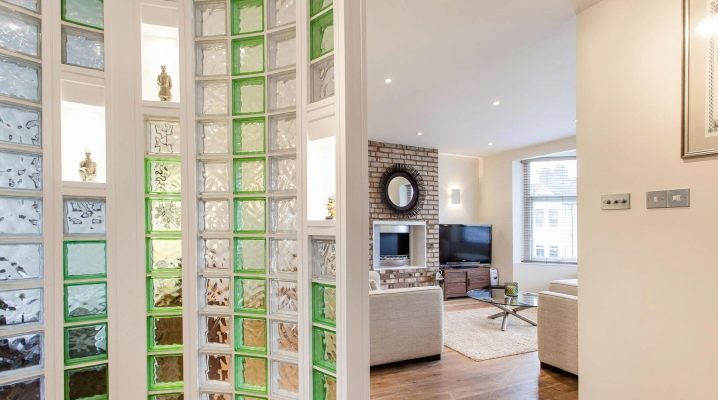
The layout of the apartment does not always meet our expectations, it can be inconvenient. In addition, it is not always possible to allocate separate premises for all household members. You can solve this problem with the help of various kinds of partitions.

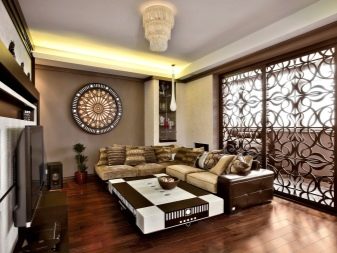
Features of zoning
The installation of partitions has its advantages: with their help, you can not only increase or decrease the space, implement original design solutions, but also zone it. That is, to separate its parts that are similar in purpose: to allocate a dining area in the kitchen, and a working area in the living room. Each such part can be decorated in different styles.
Of course, you should not combine medieval and modern decor in one apartment. However, by following the preferences of each tenant, it is possible to design the areas intended for individual use in overlapping modern directions. And make common areas stylistically neutral, minimalistic, without bright accents.

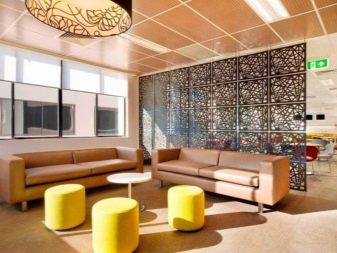
To make zoning not only decorative, but also functional, designers adhere to certain rules:
- The shape of the room should be taken into account. The result of the division should be a zone that fully meets the task. A rectangular studio cannot be divided along, as the resulting parts will be too narrow. Splitting across will be optimal.
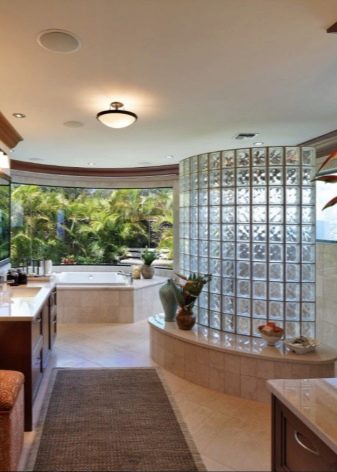
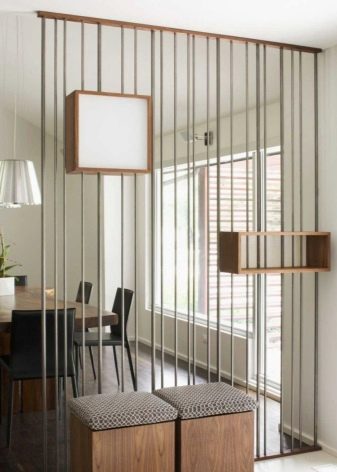
- Another important nuance is the location of windows and doorways. In no case should they be divided in half, even if they are wide enough. If there is only one window, it is necessary to determine where natural lighting is most needed (in the nursery, in the study). If the window is in the middle, this will cause certain difficulties, you may need a low partition (up to the window sill). In addition, it is necessary to determine which zone will become the passage, it largely depends on the width.
- A small room with low ceilings should not be cluttered with bulky objects, be it furniture or architectural objects.
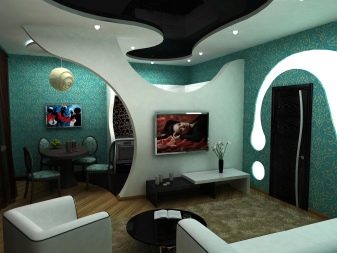
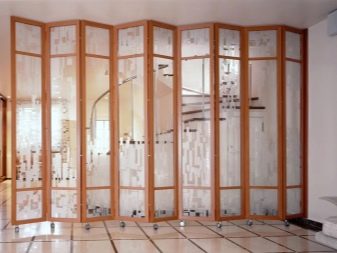
- It is imperative to draw up a project on which not only the architectural elements of the apartment will be located, but also the approximate arrangement of furniture, its dimensions and approaches to it. To do this, you can use the services of a designer or build a drawing yourself on paper or using computer programs. Perhaps, when visualizing all desires, mistakes will become obvious or you will want to change something.
- Often, in addition to partitions, other zoning methods are used, for example, with the help of decoration, lighting, floor or ceiling drops - in this case, they should be combined with each other and their implementation should be possible from the technical side.
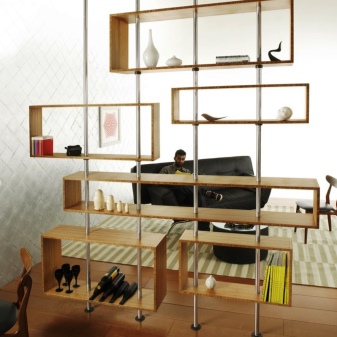
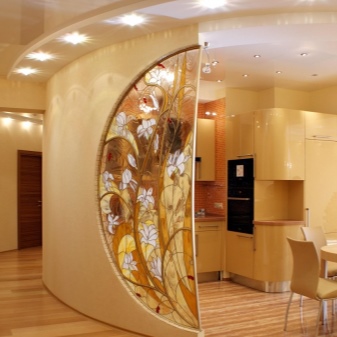
Types of partitions
All diversity can be roughly divided into:
- interroom (their demolition or installation concerns the redevelopment of the apartment in general);
- room (sharing a specific room).
In addition to the above, there are partitions:
- deaf (used only as a wall);
- with openings (arches, windows for serving food, through niches, in the form of a rack);
- multifunctional (with an internal arrangement - drawers, sections for all sorts of things).
The partitions do not have to be high. Their parameters depend on the characteristics of the room. They can occupy the entire distance from wall to wall, or only a certain part.
Even columns and other building objects can also be used as delimiters.

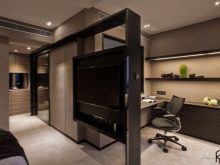

Materials (edit)
In the manufacture of stationary walls, the following materials are used:
- Brick, like any other block material (gas and foam blocks), requires certain installation skills. After construction, such a wall is plastered, putty and covered with paint or wallpaper. The material has high strength indicators.
- Tongue slabs - form a flat surface, easy to process, easy to wiring in them.
- Drywall or gypsum fiber - consists of gypsum covered with cardboard or reinforced with cellulose fiber. With their help, you can create structures of different shapes (including radius). However, they cannot withstand heavy loads.


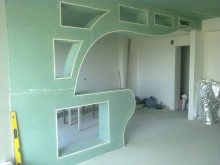
If the partition is temporary or decorative, then it can be made from:
- Wood. The most environmentally friendly material. Its strength depends on the type of wood.
- Particleboard and MDF. They do not require alignment, they are well processed, and they are affordable. Finishing is carried out in the form of lamination and sometimes dyeing.
- Plastic. The most fragile and lightweight material. Due to its species diversity and ease of harvesting, it is widespread. It can be colored, transparent, matte.
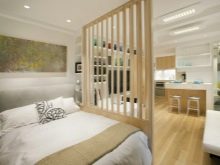
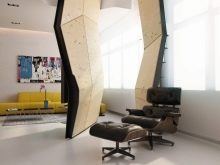
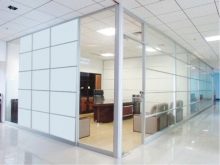
- Glass. It can be transparent, translucent, tinted and mirrored. High temperature toughened glass is resistant to damage.
- Metal. Used primarily for fittings and reinforcement in less durable materials.
- Fabrics. It is inferior to other materials in terms of strength and sound insulation. Curtains wear out and get dirty quickly.

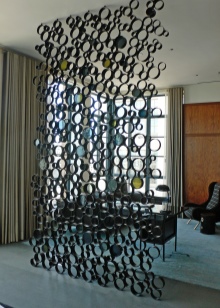

Constructions
Stationary partitions are the most common. They can be monolithic or storage systems. The advantages of this type are reliability, sound insulation, availability. The main disadvantage is a rather complicated installation that affects the finish.
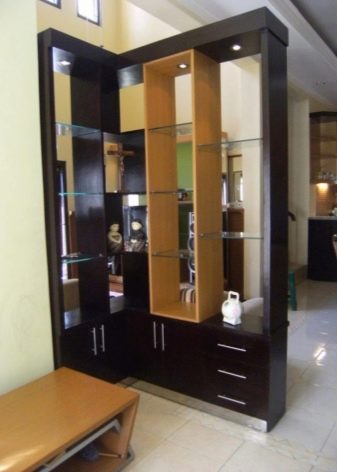
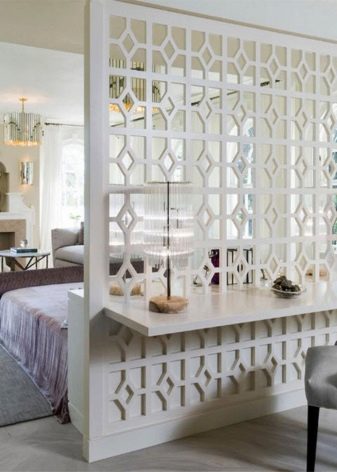
One of the issues that is solved when planning a partition is the doorway and the installation of a door in it. An alternative in this case could be a partition that replaces the door. Depending on the availability of mechanisms, structures are distinguished:
- Sliding. Such partitions in appearance resemble wide doors. They are driven by metal top and bottom profiles. Sliding doors are equipped with wheels, due to which the opening and closing actually occurs. If there are more than two of them, then one remains motionless, while all the others hide behind it or move apart in different directions like a compartment.
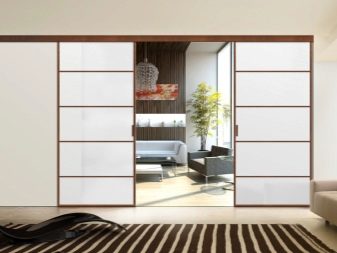
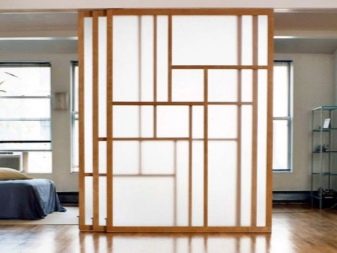
- Folding act on the principle of an accordion or a book. The mechanism consists of rollers and guides. Canvases of this kind are narrower and their number is greater than that of sliding ones.
Both of them can be suspended, in which case the metal profile will be fixed only from above and, of course, this type looks more interesting, does not affect the floor covering and is easier to install. Despite the fact that such systems take up less space than a typical swing door design, their position in the apartment remains fixed.
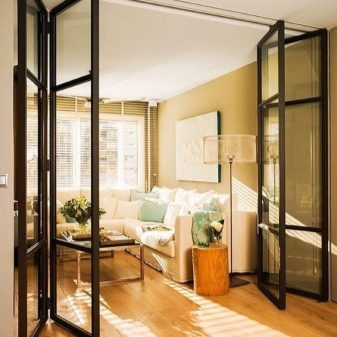
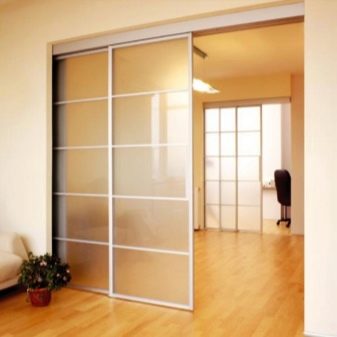
To change the space, if necessary, mobile units are suitable, a classic example of which is furniture, namely a wardrobe. To save time and space, it can be double-sided. And modern modular furniture systems are truly a multifunctional object. After all, the purpose of the modules can be different: from storing things, a place to sleep and work, to building in equipment.


By their configuration, movable partitions can be:
- Straightforward.
- L-shaped.
- Transforming (when the parts are attached to each other by pivoting mechanisms and can be fixed at an angle to each other).
For maneuverability and ease of movement, movable furniture and standard partitions are equipped with wheels.
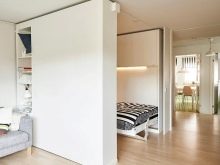
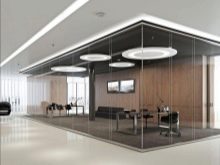
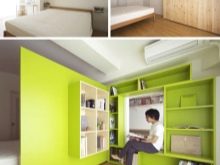
Decor options
The appearance of the partition directly depends on the material, its density and processing possibilities. Bricks, blocks, slabs can be used without leveling. Means for fastening such building materials can be contrasting. This design is relevant and will be an excellent complement to the loft style. Wooden walls are used without finishing; they are only varnished or stained. And also wicker made of bamboo or vine.

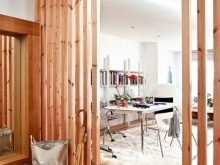
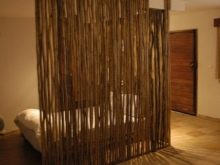
In this way, not only the natural color is preserved, but also the texture. This naturalness will create a feeling of closeness to nature. Do not think that such models look too simple. Wood carved and forged metal products can look like real works of art. You can choose a pattern close to the general style - floral, geometric, abstract.
Glass, plastic or plexiglass also have their own characteristics. They are translucent or opaque.
The ability to print on such surfaces will help to liven up the room.
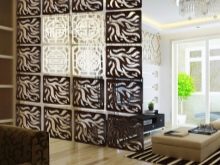

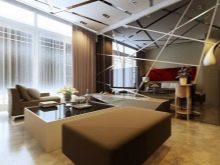
The image can be anything. For example, landscape, patterns, scenes from films or books, photographs. Whether in black and white or in color, they can be matched to almost any style. Stained-glass windows can create competition for them.
Stained glass art objects, especially those created by hand, are more suitable for the classic decoration of a room. And in combination with the corresponding frame, they will become a bright stylistic accent.
The mirror surface can drastically change the space, make it wider. And their location, combined with the right lighting, can create original lighting effects.
The mirror can be glossy, satin, combined or decorated with a pattern.
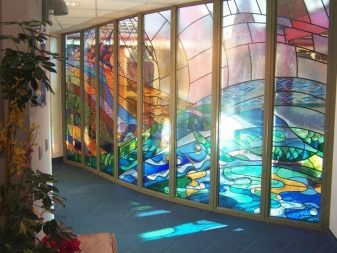
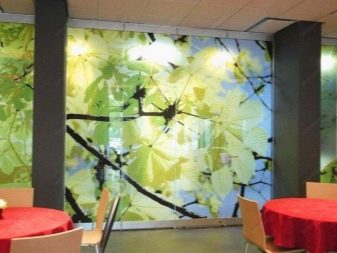
Which one to choose?
A few recommendations:
- First of all, the choice depends on the scale of the repair. If a major redevelopment is being undertaken with the transfer of heating devices and openings, it is necessary to assess how much this will affect the entire building as a whole. Structural walls cannot be demolished or altered. You can find out how legal the changes are, in the relevant organizations.
- The weight of the building materials must correspond to the density of the floors and must not exceed the permissible load for them. If it does not meet building codes, replace heavy options with light ones.
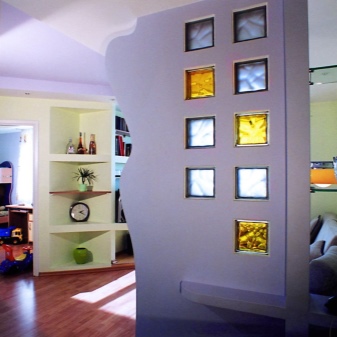
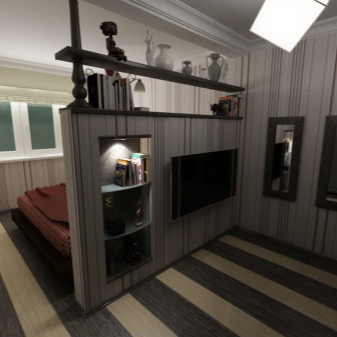
- The decision on how your future partition will look like depends not only on the premises, but also on your financial capabilities. You can reduce the cost by choosing a cheaper design and refusing the services of specialists in the direction of easy installation, which you can carry out yourself.
- If the zoning idea came to you after finishing the room, you need an option that affects it as little as possible (for example, hanging).
- Only stationary blank walls can provide good sound insulation and protection from the cold. Decorative ones are mainly used for decoration.
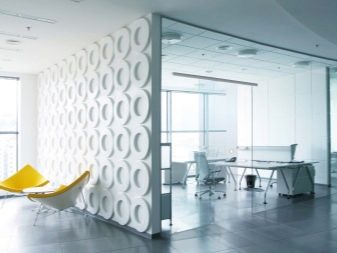
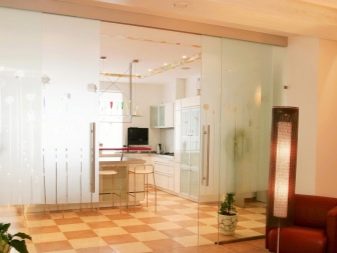
- Give preference to coatings that do not require complex maintenance and additional costs for repair and restoration. This moment is relevant for families with children or pets.
- All fasteners must be strong. Reliable fittings, of course, are not cheap, but their service life is much longer. Safe materials must have certificates of conformity.
- Consider the habits and preferences of those people who will use these constructions.
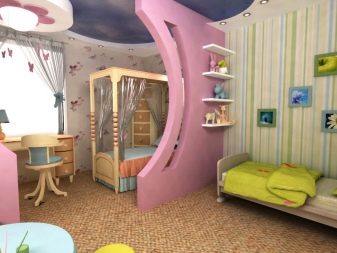
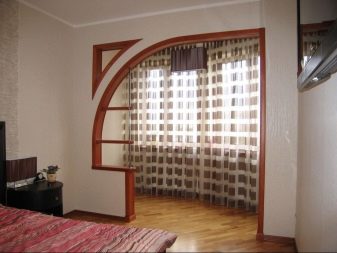
Beautiful examples in the interior
Partitions can vary in size. United by common processes, the kitchen and the dining room can be delimited by narrow columns and a low wall between them. They are appropriate for both modern and classic interiors.
Curved partitions of an unusual shape with various inserts will catch all eyes. Plasterboard structures have earned wide popularity not only because of the possibility of creating unusual decorative objects, but also because of practical, spacious storage facilities.
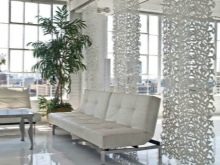
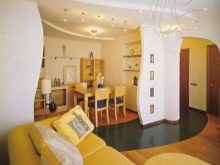
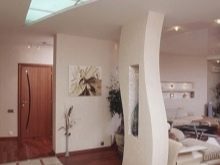
You can enhance the separation effect in different ways, including backlighting.It can be multi-level, to add volume to the structure. Multi-colored LEDs will give it brightness. Another innovation - vortex panels will become an unusual additional light source.
Modern mechanisms of sliding partitions allow not only dividing a room, but also quickly combining it. These temporary dividers can easily replace doors, save space and make the transition from one part to another easy, even for a child.
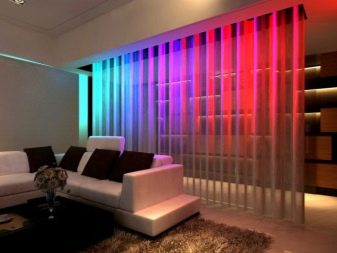
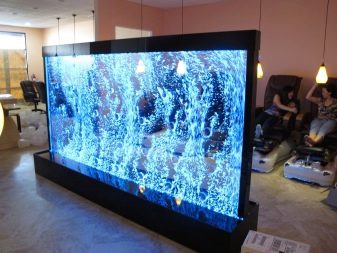
With the help of radius structures, you can create not only a separate wall, but also a round room. This new way of organizing space is interesting not only for its ergonomics, but also for its extravagance.
Design solutions sometimes surprise with their extraordinaryness.
You can delimit the space with the help of plants, pipes, garlands, installations. The main thing is that they fit well into the interior.
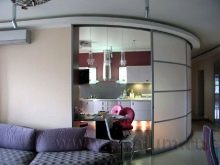
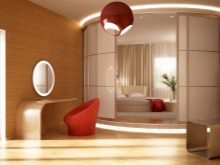
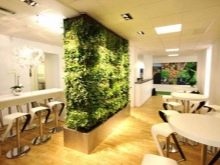
For information on what materials are used to make partitions in the apartment, see the next video.












The comment was sent successfully.